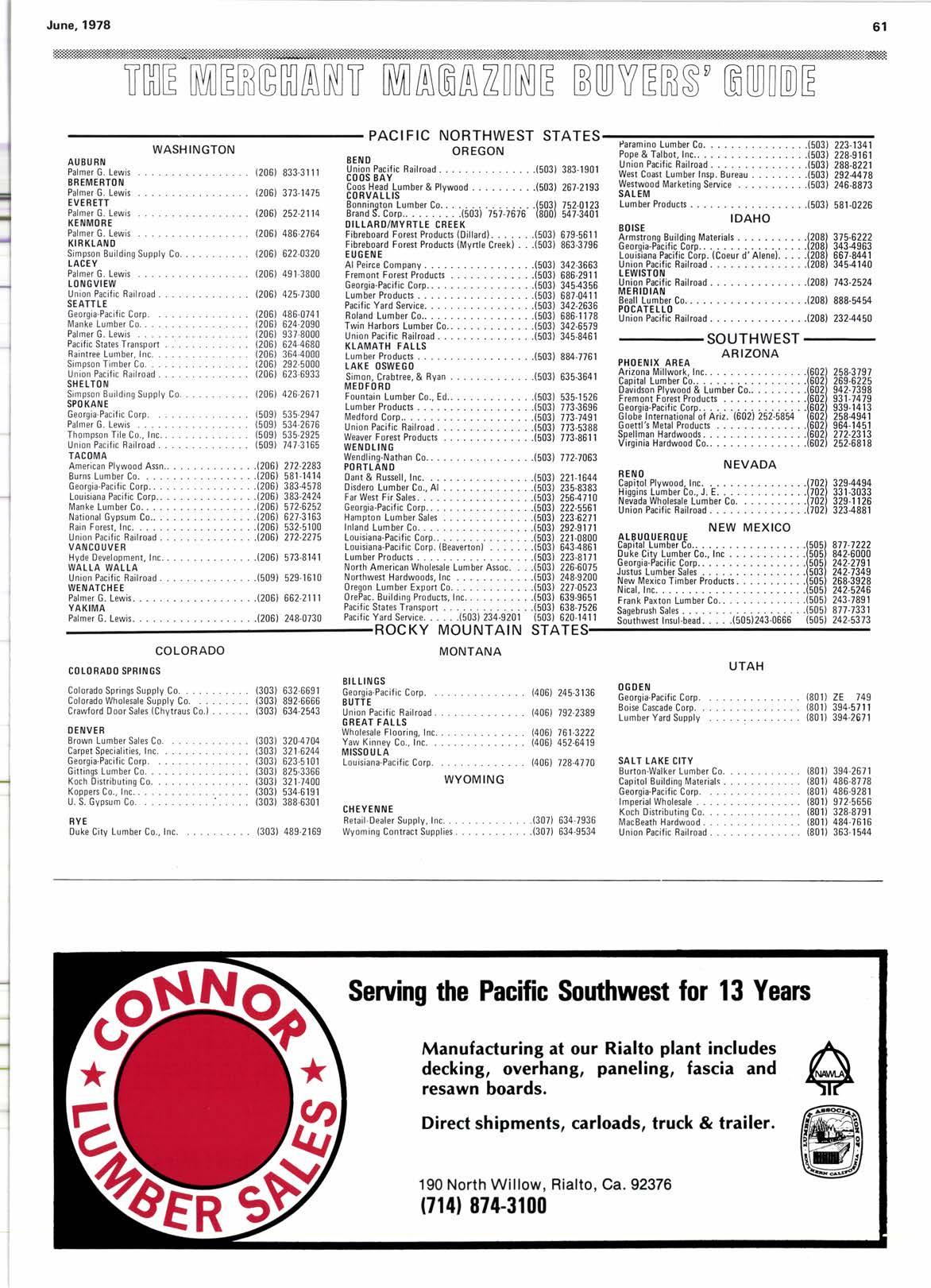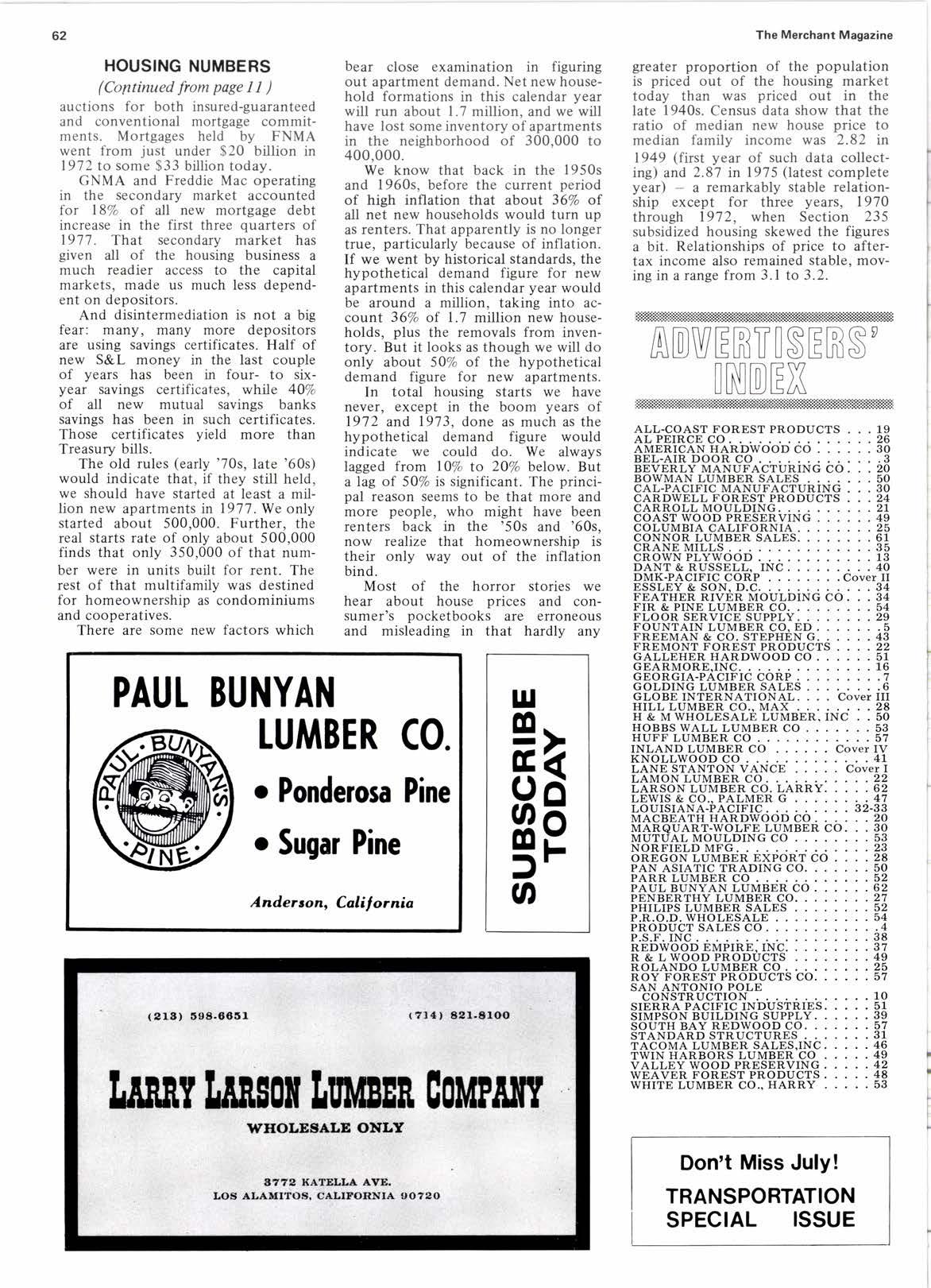
2 minute read
THE MERGHANT MAGAZINE GUIDE
Housing Numbers
(Coptinued from page I I ) auctions for both insured-guaranteed and conventional mortgage commitments. Mortgages held by FNMA went from just under $20 billion in 1972 to some $33 billion today.

GNMA and Freddie Mac operating in the secondary market accounted for l8% of all new mortgage debt increase in the first three quarters of l9'17. That secondary market has given all of the housing business a much readier access to the capital markets, made us much less dependent on depositors.
And disintermediation is not a big fear: many, many more depositors are using savings certificates. Half of new S&L money in the last couple of years has been in four- to sixyear savings certificates, whte 40% of all new mutual savings banks savings has been in such certificates. Those certificates yield more than Treasury bills.
The old rules (early'70s, late '60s) would indicate that, if they still held, we should have started at least a million new apartments in 1977. We only started about 500,000. Further, the real starts rate of only about 500,000 finds that only 350,000 of that number were in units built for rent. The rest of that multifamily was destined for homeownership as condominiums and cooperatives.
There are some new factors which bear close examination in figuring out apartment demand. Net new household formations in this calendar year will run about 1.7 million, and we will have lost some inventory of apartments in the neighborhood of 300,000 to 400,000.
We know that back in the 1950s and 1960s, before the current period of high inflation that about 367o of all net new households would turn up as renters. That apparently is no longer true, particularly because of inflation. If we went by historical standards, the hypothetical demand figure for new apartments in this calendar year would be around a million, taking into account 36% of 1.7 million new households, plus the removals from inventory. But it looks as though we will do only about 50% of the hypothetical demand figure for new apartments.
In total housing starts we have never, except in the boom years of 1972 and 1973, done as much as the hypothetical demand figure would indicate we could do. We always lagged from l0% to 20% below. Blt a lag of 50% is significant. The principal reason seems to be that more and more people, who might have been renters back in the '50s and '60s, now realize that homeownership is their only way out of the inflation bind.
Most of the horror stories we hear about house prices and consumer's pocketbooks are erroneous and misleading in that hardly any greater proportion of the population is priced out of the housing market today than was priced out in the late 1940s. Census data show that the ratio of median new house price to median family income was 2.82 in 1949 (first year of such data collecting) and 2.8'7 in 1975 (latest complete year) - a remarkably stable relationship except for three years, 1970 through 1972, when Section 235 subsidized housing skewed the figures a bit. Relationships of price to aftertax income also remained stable, moving in a range from 3.1 to 3.2.










